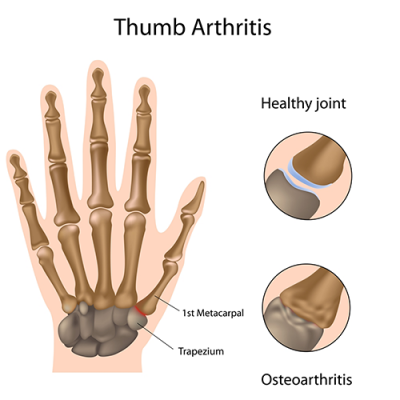Trapezium

The trapezium is one of eight small bones in your wrist. Together with the thumb metacarpal, it forms the 1st carpometacarpal joint (CMCJ). This joint gives the thumb a large range of motion, which is also one of the factors that makes it vulnerable to wear and tear.
Thumb pain as a result of osteoarthritis of the 1st CMCJ is a common disabling condition. It is progressive in nature, characterised by worsening pain, swelling, stiffness, weakness, deformity and dysfunction. The latter is especially noticeable with pinching and gripping activities.

FAQs
The surgery is performed under general anaesthetic on a day case basis. It involves making an incision along the inside of your elbow and dividing the roof of the cubital tunnel. This reduces the pressure on the nerve by providing more space for it to move. In some patients, as the elbow moves through flexion and extension, the nerve has a tendency to snap back and forth over the bony bump on the inside of the elbow. In such cases, the nerve is moved forwards and fixed in a position that prevents this. The wound is closed with dissolvable stitches and a splint is applied. The procedure takes between one to two hours.
Identifying and avoiding actions that trigger your symptoms, in addition to physiotherapy, anti-inflammatory medications and wearing a splint and protective padding around your elbow can provide some relief. If your symptoms persist despite conservative measures, or if severe nerve compression is present, the problem should be dealt with surgically to prevent irreversible damage.
Some discomfort is to be expected after the surgery and Dr Collins will ensure you have adequate pain relief to deal with this. You will remain in a splint for two weeks and you will not be able to drive for this period. Dr Collins will refer you to a hand therapist to ensure you get the best possible functional outcome. This can take up to six weeks and sometimes longer.
Your return to work will be determined by the type of job that you do. Patients in a supervisory or managerial role may be able to return to work after 2-3 weeks. If your work is more physically demanding, you may require 6 weeks or more of leave.

